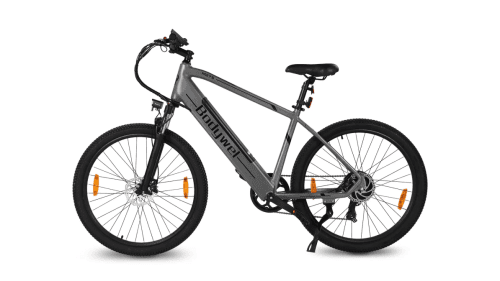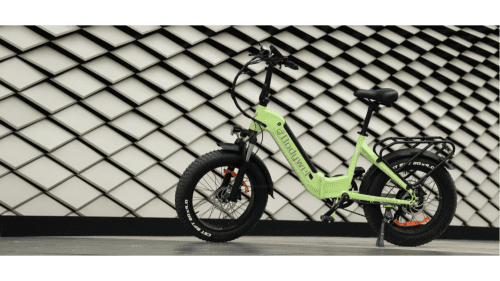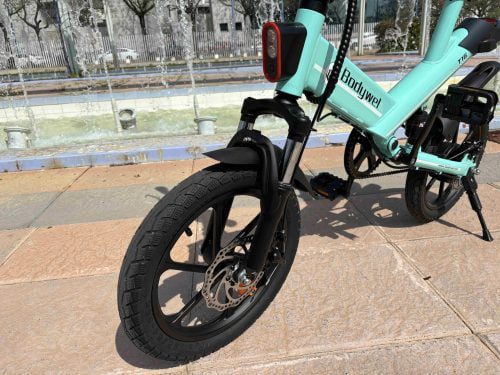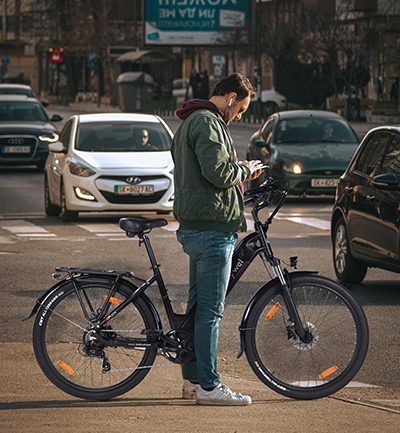Electric bicycles have rapidly grown to characterize a shift in how one travels in this urban area, with their growth in the past decade. These have been fusing exercise with environmental sustainability and incredible convenience. The electric bike has come to represent more than just a way of getting around; it has come to represent the shift towards smarter and more effective urban mobility. While many other technologies have evolved, the developed and incorporated advanced ebike suspension fork systems in vehicles have made all the difference in providing a much-refined riding experience.
Bodywel ebikes with suspension have front and full suspensions (also called dual suspension ebikes), with assured performance to be reliable and easy to use. It means much more than a system added to the bicycles; they would, on the contrary, make an integral part in the bike’s ability to offer extremely enhanced comfort and better control on all surfaces. Be it the busy city streets or the rough, uneven paths, the suspension systems on the Bodywel e-bikes absorb, then dissipate bumpy shocking energy to even out the ride and reduce rider fatigue.
The fundamental reason for such sophisticated suspension systems has originated from extensive researching and innovating in mechanical engineering and materials science. Engineers now understand that dynamics of how shocks affect ride, stability, and comfort; therefore, engineers have been able to design suspension systems that not only manage the impacts more effectively but also aid in improving handling of the bike. These incorporate adjustable settings for tuning to different riding conditions and personal preference, versatile to care for casual and seasoned commuters.
The Classic Ebike Suspension Systems Essentials
E-bike suspension systems are ingeniously engineered in the control of unfavorable road surface forces that would otherwise jolt and vibrate riders on their way, turning a good ride into an arduous chore. They not only smooth the ride but also improve the handling and safety overall. The two major suspension systems offered in e-bikes are designed for varying ride conditions and needs:
1. Front Suspension Systems: The front suspension systems are mounted on the front fork and thus play an important role in absorbing the shocks that affect the front wheel. Most of the systems use telescopic forks where the first shocks are absorbed by the internal springs and dampers, with the dampening occurring gradually to absorption. Such a suspension is a must-have on the urban commute, wherein the rider is constantly attempting challenges like potholes, curb edges, broken pavements, etc. The front suspension ensures that the front wheel is stabilized, and thus it controls it, which is very vital for safe urban commuting.
2. Full Suspension Systems: These are more refined and have shock absorbers present at the front and the back. In such a case, the rear kind of suspension, whose effects are not usually felt much in softer landscapes when riding on cobblestone streets and gravel paths, or even very mild off-road conditions with heavy bumps and drops, can become very critical. With full suspension systems, this gives a very balanced ride by distributing shock absorption to both ends of the bike, dramatically increasing comfort and bike stability.
Primarily, a spring mechanism located at the core of these systems, either an air, coil, or elastomer mechanism, complemented by a damper, really gives speed and resistance adjustment to the spring. Additional adjustment knobs or switches are then typically added to further tune the suspension based on the rider’s various input parameters, be it weight, riding style, or terrain.
Functionality and Developmental Background
Developed primarily for mountain biking, which by definition sees a lot of rocky, uneven paths, suspension systems are inching in for urban e-bikes. Foreshadowing a far broader trend of comfort, this assertion suffices with the specific needs that today’s riders want from their bikes. Material science advances have found a rich environment for the development of better suspension systems. Lightweight yet high-strength materials in the form of carbon fiber composites and specialty alloys have brought down net weights considerably without any sacrifice in strength or durability.
Additionally, precision engineering has allowed much finer damping mechanisms that can be tuned to a high degree of accuracy. This has created a range of riding experiences that heretofore were previously only available in the top end high-performance bikes. This, in effect, allowed the designers to iterate suspension models with a rapid turnover between CAD simulation and physical testing goals. This synergy of technology and design lies at the heart of how advancing e-bike suspension systems have, in turn, become a key part of the overall modern cycling experience, especially across urban fields.
Impact on Riding Experience
E-bike suspension systems do make a world of difference, more so on the harshest of surfaces. This approach makes e-bikes much more comfortable for riding and also enhances the bike’s performance and safety. Let us now discuss in more detail how important the presence of suspension systems is in e-bikes for urban riding:
– Riding Comfort Over Rough Surfaces: Suspension, when properly tuned, can offer great initial effect of just smoothing-out handling over a wide range of urban obstacles. Riders moving within urban settings often come across uneven road surfaces, such as potholes, railway tracks, and curbs, and they can adversely affect the ride comfort and quality. The suspension systems absorb all these shocks to reduce the jarring impacts on the rider. This is not only about comfort but also relief from physical stress on the rider’s body, especially to the wrists, arms, and lower back. As bumps and other vibrations are dampened, so the suspension allows a smoother ride and a more pleasant experience during a longer commute.
– Improved Traction: Traction is a part of effective cycling much needed for assured safety in urban settings. Suspension systems can keep the tires contact with the ground even on uneven surfaces. The possibility of continuous contact allows better traction, which directly relates to an important factor for proper braking response and proper acceleration. With added traction, the bike can handle slick conditions and abrupt changes in terrain, making it absolutely safe.
This is of utter importance in city usage, where the roads are wet, oily, and might suddenly produce extraneous waste. The increase of traction also means more of the rider’s power will effectively be transferred onto the road, thus increasing overall bike efficiency.
Improved Control: The suspension systems are vital parts of the total control and maneuvering of the bike. In this respect, they shall deliver a stable handling of the bike, which is very critical in the prediction of course of operation and hence keeping it controlled. This stability, when cruising through traffic, taking sharp turns, or dodging, is very essential. Enhanced control also infuses more confidence in the rider, especially on difficult surfaces where the bike is required to perform reliably. The improved suspension in these systems often accommodates settings that could easily be adjusted for stiffening during specific riding conditions, say, a firmer ride on smooth roads or a softer setting for bumpy paths. These features allow a bike to be tailored to specific environments, making a bike ride even more comfortable and highly responsive.
These, however, are not independent enhancements but that work in a concerted manner with the other features to enhance electric bicycles’ fungibility and attractiveness to urban users. Less physical shock—the cause of tiredness—is likely to lead to less tired riders. Enhanced safety via superior traction, improved control over handling, and otherwise a more reliable, comfortable, and efficient trip will also be enjoyed by the riders.
The use of suspension systems in ebike classic, such as those available from Bodywel, would make it so that riders can take full advantage of this, making their daily commutes all the less strenuous and far more enjoyable.
Bodywel’s innovation in suspension technology
Bodywel uses suspension technology in all their e-bikes to cater for both novice and experienced commuters. All of the models come with a front suspension system, except for the Bodywel T16 and F20 Pro specialized ebikes, with the ability to absorb a big part of road shock and suits most rides around town. On the other hand, Bodywel T16 and F20 Pro are fitted with a full suspension system to provide balanced damping, which is necessary for comfort and traction over long distances and varied terrain. Apart from that, each model incorporates the suspension system for easy adjustments and maintenance, while at Bodywel, you can buy a ebike to suit your needs, from light city commuting to more difficult adventure riding.
With the cityscape ever evolving, so does the technology created to move about it. From the creation of the most advanced ride for everybody to enjoy, Bodywel’s electric bike with its innovative suspension system, on the other hand, is truly taken to a whole new level. With front and full suspension systems, Bodywel ensures that every cyclist, regardless of their being fresh from the elementary riding school or having spent many years in the saddle, experiences a smoother, more responsive ride, no matter their experience or the complexity of the route. Above all, this advanced suspension technology really reflects Bodywel’s commitment to providing not just a means of transport, but a window to a better, greener, and more fun way of life. Expect e-bikes to ride to the future of city commuting the way Bodywel is set to rapidly streamline our movement across the town with a touch of fun.





